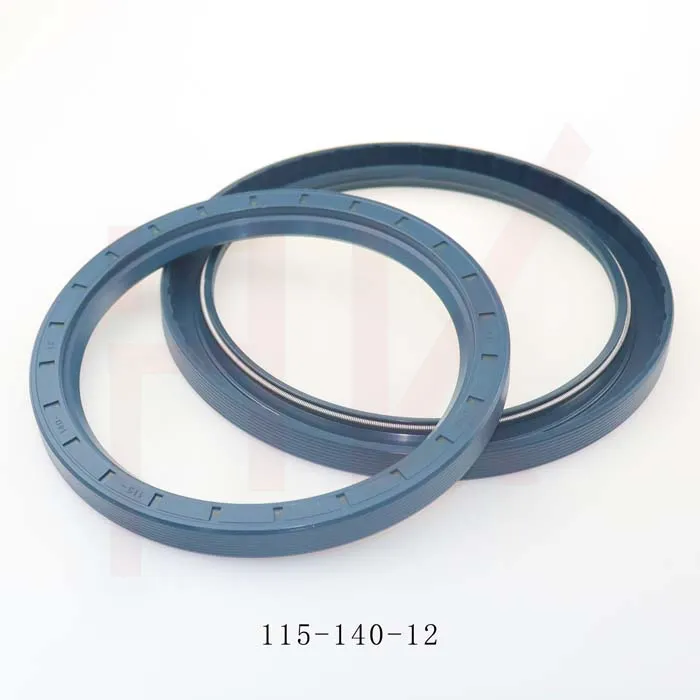Dùbh . 16, 2024 11:26 Back to list
hydraulic piston oil seals
Understanding Hydraulic Piston Oil Seals
Hydraulic piston oil seals play a significant role in the functionality and efficiency of hydraulic systems. These systems are widely utilized in various industries, including manufacturing, automotive, aerospace, and construction, primarily for their ability to transmit and control power through hydraulic fluid. At the heart of these systems, hydraulic piston oil seals are crucial components that help maintain pressure, prevent fluid leakage, and ensure the longevity of hydraulic equipment.
Function of Hydraulic Piston Oil Seals
The primary function of hydraulic piston oil seals is to contain hydraulic fluid within the cylinder and prevent it from leaking out during operation. As the piston moves within the cylinder due to fluid pressure, the oil seal ensures that the hydraulic fluid is effectively contained. This containment is vital for maintaining system efficiency and preventing contamination of the hydraulic fluid, which can lead to operational failures.
Furthermore, hydraulic piston oil seals assist in protecting the internal components of the hydraulic system from external contaminants such as dirt, dust, and moisture. By sealing the system, they ensure that these harmful particles do not enter and cause wear or damage to the system components. This feature is essential for maintaining the performance and reliability of hydraulic systems over time.
Types of Hydraulic Piston Oil Seals
There are several types of hydraulic piston oil seals, each designed for specific applications and environments
. Some of the most common types include1. Nitrile Rubber Seals (NBR) NBR seals are among the most widely used oil seals due to their excellent resistance to petroleum-based hydraulic fluids and a good balance of flexibility and durability. They are suitable for a range of temperatures but have limitations in high-temperature applications.
2. Fluoroelastomer Seals (FKM) These seals offer superior resistance to high temperatures and aggressive chemicals. They are ideal for environments where hydraulic fluids may contain solvents or where high-temperature operation is required.
3. Polyurethane Seals Known for their high abrasion resistance and excellent elasticity, polyurethane seals are ideal for dynamic applications. They can withstand harsh conditions and are often used in heavy-duty machinery.
hydraulic piston oil seals

4. PTFE Seals Polytetrafluoroethylene (PTFE) seals are highly resistant to chemical degradation and can operate under a broad range of temperatures. Due to their low friction properties, they are often used in applications requiring smooth operation and minimal wear.
5. Composite Seals Some oil seals are made from composite materials, combining the advantages of different materials to enhance performance. These seals can offer a tailored solution for specific hydraulic applications.
Installation and Maintenance
Proper installation and maintenance of hydraulic piston oil seals are crucial for optimal performance. Here are some essential tips
- Clean the Installation Area Before installing new seals, ensure that the installation area is clean and free from debris, dirt, or old seal residues, which could lead to improper sealing.
- Use Proper Tools Utilize the correct tools designed specifically for the installation of hydraulic seals to avoid damage during fitting. Avoid using excessive force, as this can compromise the integrity of the seals.
- Regular Inspections Periodically inspect hydraulic systems for signs of leaks or wear on seals. Early detection can prevent more significant problems and costly repairs.
- Choose the Right Seal Always select the appropriate seal type for the specific hydraulic fluid, temperature, and operating conditions of the application. This choice can significantly affect the longevity and performance of the seal.
Conclusion
Hydraulic piston oil seals are integral components that ensure the efficiency and reliability of hydraulic systems. With various types available, it is essential to select the right seal for specific applications and maintain proper installation practices. By understanding the critical functions of these seals and implementing effective maintenance strategies, industries can maximize the performance and lifespan of their hydraulic systems, ultimately leading to improved operational efficiency and reduced downtime. In the world of hydraulics, the simple yet vital role of oil seals cannot be overstated.
-
TCN Oil Seal Metal Ring Reinforcement for Heavy Machinery
NewsJul.25,2025
-
Rotary Lip Seal Spring-Loaded Design for High-Speed Applications
NewsJul.25,2025
-
Hydraulic Cylinder Seals Polyurethane Material for High-Impact Jobs
NewsJul.25,2025
-
High Pressure Oil Seal Polyurethane Coating Wear Resistance
NewsJul.25,2025
-
Dust Proof Seal Double Lip Design for Construction Equipment
NewsJul.25,2025
-
Hub Seal Polyurethane Wear Resistance in Agricultural Vehicles
NewsJul.25,2025
-
The Trans-formative Journey of Wheel Hub Oil Seals
NewsJun.06,2025
Products categories
















